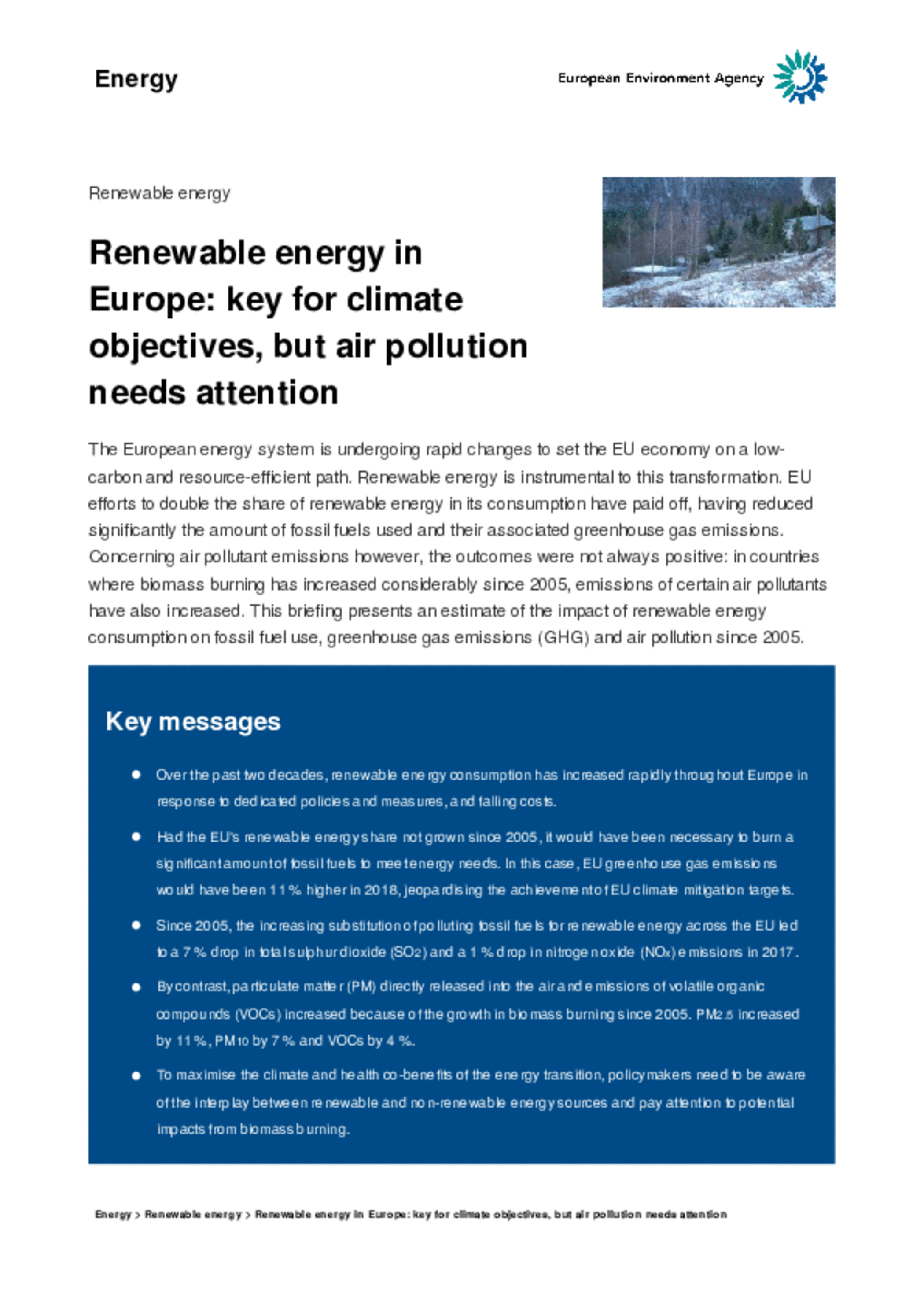All official European Union website addresses are in the europa.eu domain.
See all EU institutions and bodiesBriefing 13/2019
The European energy system is undergoing rapid changes to set the EU economy on a low-carbon and resource-efficient path. Renewable energy is instrumental to this transformation. EU efforts to double the share of renewable energy in its consumption have paid off, having reduced significantly the amount of fossil fuels used and their associated greenhouse gas emissions. Concerning air pollutant emissions however, the outcomes were not always positive: in countries where biomass burning has increased considerably since 2005, emissions of certain air pollutants have also increased. This briefing presents an estimate of the impact of renewable energy consumption on fossil fuel use, greenhouse gas emissions (GHG) and air pollution since 2005.
ISBN: 978-92-9480-199-9

